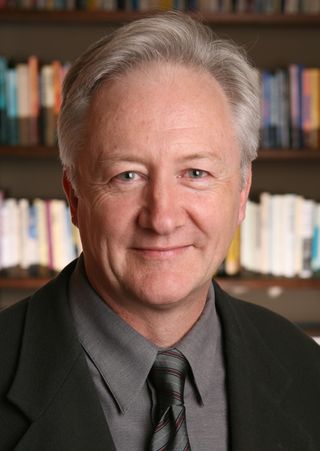Book review by Michael J. Agovino
Long before the arrival of glossy state-run lotteries in the 1960s and '70s, smaller lotteries—illegal, but almost as well-organized as a Powerball drawing— thrived in poor neighborhoods. In Chicago, the lotteries were known as the policy racket. In New York, they were called the numbers game. The history of these illicit enterprises is a picaresque mélange of race and class, business acumen and organized crime. A significant part of the story—Harlem during the 1920s and 1930s—receives a thorough and insightful treatment in "Playing the Numbers," which recounts a flowering of black entrepreneurship in addition to capturing how integral the numbers game was to the lives of average Harlemites.
For the authors, history professors Shane White, Stephen Garton, Stephen Robertson and Graham White, the key figure in their story is a black man named Casper Holstein, who emigrated as a teenager from St. Croix, then known as the Danish West Indies, to New York in 1894. Holstein was a pioneer of the modern numbers game. Lotteries had been played in the city at least as far back as the 18th century, but they were plagued by suspicions that the fix was in. It wasn't until 1920 or '21 that numbers operators and players reached a consensus on what would constitute a trustworthy daily number. That figure, falling between 0 and 999, was based on information posted every morning by the New York Clearing House, a financial institution beyond reproach that oversaw transactions between the city's banks.
As the authors explain, the number was determined by taking the second and third digits from the total amount of money in bank clearances, and the third digit in the Federal Reserve Bank's credit balance. On a day when the bank clearings were $589 million and the Fed's credit balance $116 million, the "89" from the first amount was combined with the "6" of the second to establish the day's winning number, 896. The numbers operators paid out at a rate of 600 to 1. The usual wager was just a dime—with a potential payoff of $60, a substantial sum back then.
Using a number based on information from a respected banking institution was "a brilliant scheme—simple, transparent, and elegant," the authors note. Casper Holstein is generally credited with the inspiration; it was certainly his genius in the early 1920s that saw how to expand the numbers game and make it more efficient. He established a network of "banks" throughout Harlem and San Juan Hill (a black neighborhood near what is now Lincoln Center), outposts that were the bases of operation for "runners," who earned a 20% commission on the day's total receipts. The runners also customarily received a 10% tip from winning players.
Holstein soon became known on the street and in the local papers as the Number King. He was quickly joined by a slew of emulators, fellow kings and queens. These members of the lottery royalty and their numbers businesses attracted little attention from the police during the Prohibition era, when authorities were more concerned with battling alcohol. Cops who did move against the numbers game tended to lose interest after a timely bribe.
Ka-ching. A multimillion-dollar industry was born. Holstein knew his surroundings, knew his people, spotted a need, and met that need with a reliable and streamlined process. How perfectly entrepreneurial. How perfectly American. "It is difficult to convey the extent to which the numbers game permeated the sights and sounds of Harlem," the authors write. Newspapers ran stories about families ruined by numbers addiction and in 1924 Clara Smith recorded "Clearing House Blues."
But then, in 1930, the proprietors of the Clearing House, irked that their institution had become synonymous with gambling, stopped publicly posting financial information. Numbers operators, casting about for a daily source of seemingly random numbers, settled on racetrack payouts. Racetracks in the 1930s were not a magnet for the virtuous, of course, and some results were manipulated, bringing in a shady aspect to the business that had been avoided in its heyday. But the ultimate damage to the numbers game—at least as an enterprise run by blacks—seems to have been done by luck itself.
As Thanksgiving, or Nov. 25, neared each year, African-American players often chose numbers that combined 2 and 5 and their sum, 7. On the day before Thanksgiving in 1931—what would become known as Black Wednesday—the winning number turned out to be 527. So many players had chosen 527 that numbers bankers were wiped out. The gangster Dutch Schultz, though, had plenty of cash, and he had been seeking a foothold in the lucrative Harlem numbers game. Schultz bailed out bankers in exchange for a piece—a large piece—of their operations. Once Schultz entered the game, the days of the black kings and queens were, well, numbered.
"Playing the Numbers" brims with fascinating, colorful stories about a little-known facet of New York life, but the book suffers from chaotic organization and a timeline that keeps circling back on itself. It's a wonder that the authors didn't frame the story as a biography of Casper Holstein— innovator, racketeer, proud black man, stylish boulevardier and even philanthropist. Especially if he was, as they write, on a par with Marcus Garvey and "in his own way . . . as impressive a figure as any Carnegie or Mellon." He made millions, we learn, but "gave most of his fortune away to a vast array of institutions and charities," and to writers of the Harlem Renaissance.
The book ends by suggesting that the numbers game in New York died a few decades ago, the victim of state-run lotteries. But street culture is sturdy: If you know the right bodega, the numbers are still out there, dangling the promise of a tax-free windfall.
Mr. Agovino is the author of "The Bookmaker: A Memoir of Money, Luck, and Family From the Utopian Outskirts of New York City."






